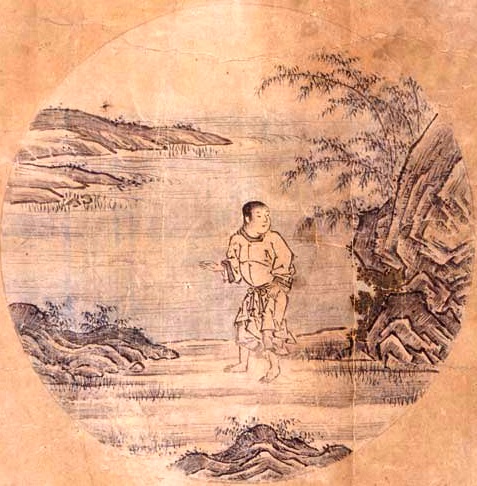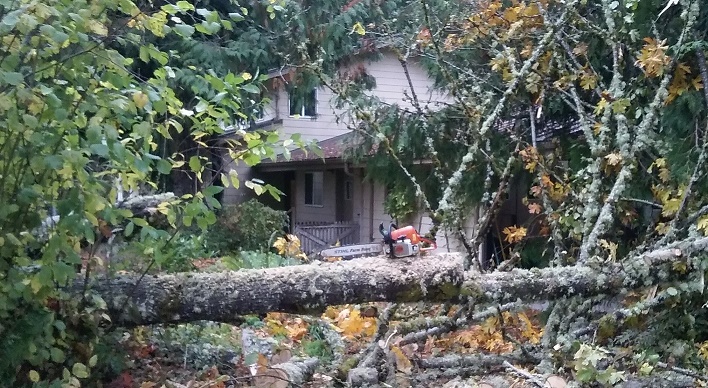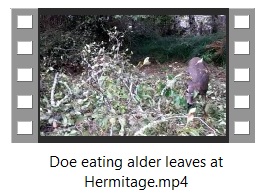In this issue:
Our relationship with the Eternal—our True Self—is the most important we will have in this or any other life. Some teachings in particular reveal the Pure Love and Great Wisdom deep in the Heart of this relationship. I would like to relate several that have particularly helped and guided me on my spiritual journey.
In the winter of 1980 I was 31 years old and working in Miami Beach as a waiter. I had recently survived a major car accident that was the culmination of a very unhealthy and destructive lifestyle that was causing much suffering for myself and those close to me. One night, walking on the beach, I hit rock bottom in the depths of despair. I fell to my knees and cried out at the top of my lungs for help. Our Guardian Ceremony says that our sincere cries for help receive a sympathetic response. In my case, the help came in totally unexpected ways. First, I was called to learn to meditate. Then, Rev. Master Jiyu-Kennett’s book Zen is Eternal Life literally fell into my hands in a bookstore, which put me on the specific path of Zen meditation. And that, finally, led me in January 1983 to California to train with Rev. Master Jiyu.
That crying out from the bottom of my heart was the beginning of my relationship with the Eternal. The Eternal does not coerce or threaten or bribe us into a relationship with Itself, but waits patiently with Pure Love until we sincerely ask for help.
An account that deeply and eloquently reveals our relationship with the Eternal is found in Rev. Master Jiyu’s How to Grow a Lotus Blossom, the book that recounts her great spiritual experience in 1976.1 One of the many teachings in it is that of the Five Columns. The First Column–Eternal Meditation–particularly relates to my experience that dark night on the beach; as Rev. Master Jiyu says, “Even in the darkest place the Truth may be seen and heard…there is always light in darkness and the Buddha may be seen therein if we have the willingness to look.” And some of us must find ourselves on hands-and-knees before we’re willing to look. And when we do, “[the Eternal] sends down His rays to all so that, if they truly look, they may see beyond their own facades. This is true love in all its glory.” And as I and many others have proven true for ourselves, eternal meditation “brings peace and freedom in all the situations that life brings.”
A core teaching of the Soto Zen tradition that helped me very much early in my training is that of Great Master Tozan’s Five Ranks. A senior lay member of the congregation told me that this teaching is important to him, too, so I asked him to write about it. His article follows this one.
The next teaching is the teaching of the Ox Herding Pictures. This teaching comes from a Ch’an master during the Song Dynasty (960-1279).
The first picture is called “Looking for the Ox:”2

The ox herder walks with a rope, which is a leash for the ox, but the ox is nowhere to be found.
In the early stages of practice, a person has heard that within him is the Buddha Mind (Pure Nature) but he has never seen it. Having faith that the pure nature exists, however, the person strives [trains] to find it. You have to be willing to accept any hardships you may encounter on your path.3
An anguished cry for help like mine on the beach can sometimes lead a person into despair and inertia. This teaching resonates with me because it shows that we must act; the ox herder walks, and he walks in faith that he can find his True Nature. And in the picture, the ox herder’s walking is a metaphor for training in meditation and the Precepts.
Rev. Master Koshin’s teaching on the Five Aspects of Meditation is the most recent teaching that has helped me realize my relation to the Eternal:
- Ask sincerely
- Offer wholeheartedly
- Wait patiently
- Listen carefully
- Follow gladly.
I will end with this teaching because it directly corresponds to my own practice. My crying out on the beach was a sincere asking for help, and in that asking was my wholehearted offering, although I didn’t really know it at the time. Then I had to wait patiently, because the direction I was to take was not made immediately clear to me. When learning to meditate came up as good to do, I had to listen carefully to that "still, small voice" and gladly follow where it lead, first to Rev. Master Jiyu and ultimately to becoming a monk.
A relationship with the Eternal ultimately centers on converting the greed, anger and confusion of the egocentric self to the compassion, love and wisdom of the Eternal. This is not easy, and we need all the help we can get. I have shared these teachings because they have helped me cultivate a relationship with the Eternal that has turned my life around and helped in so many ways. Many of us begin this journey of training ourselves out of suffering; later, we do it simply out of the love of doing it and out of gratitude to the Eternal and our teachers.
Postscript: Recently I gave a series of talks on Rev. Master Mokushin’s beautiful poem, “Enthralled by Shadows.” After I finished this article I realized that it embodies and expresses the teachings I relate in this article. I would like to share it with you here.
Enthralled by Shadows
Rev. Mokushin Hart
Enthralled by shadows' misty dance
Of love and grief, of will and chance,
We drift outside the Golden Hall,
Just for a moment, for a glance.
We watch the shadows rise and fall
And fail to heed the quiet call
To bathe within the radiance.
And soon we try to shape the show;
See this as friend and that as foe.
Then some forms frighten, some excite:
We start to wander to and fro.
Yet always in this dusky light
There play about the edge of sight
Reflections of a golden glow.
And though we dally in this game,
At length we turn to face the flame–
Uncloak the light of Purity–
The Truth ablaze with but one aim
To show the root causality
In depth and in great clarity
While we stand steadfast without blame.
Contritely we return to Thee;
The shadows lose reality.
And Love that shadows can’t displace,
Unhindered by our frailty,
Will draw us to the inner grace-
The gentle bathing and embrace
Within the depths of certainty.
__________________________
Note: the footnote references in the text link to these footnotes. To return to the text, use the Back arrow or button on your browser.
1. Although the book is currently out of print, Rev. Master Koshin recorded a series of dharma talks about it that is available at http://northcascadesbuddhistpriory.org/DharmaTalks/HGLBtalks.htm He also dedicated a website of essays about it at http://www.howtogrowalotusblossom.org/
2. There are a number of versions of the pictures; this is by Tenshō Shūbun, a 15th century Rinzai monk, and is in the public domain: https://commons.wikimedia.org/wiki/File:"Looking_for_the_Ox", by Tenshō Shūbun.jpg
3. Chan Master Sheng Yen, Ox Herding at Morgan’s Bay, Dharma Drum Publications, 90-56 Corona Ave, Elmhurst, NY 11373, pp. 9-10.
The Five Ranks teaching of Great Master Tozan
There is a teaching that has been particlarly helpful for me in my training, and Rev. Master Basil asked me to share my reflections on it. This article discusses the first of the Five Ranks, and I plan future articles for the others.
I first learned of the teaching of The Five Ranks of Awakening/Realization (Chinese: Wu-Wei; Japanese: Goi) from a dharma talk given by Rev. Master Koshin at the North Cascades Buddhist Priory in the 1990’s. I was immediately struck by the teaching and went on to find recordings of dharma talks by Rev. Master Jiyu-Kennett and heard further dharma talks by Rev. Master Koshin on The Five Ranks. Before I share a few reflections on the first of the Five Ranks, a bit of the history behind them will be helpful.
The teaching of The Five Ranks was expounded by Tozan Ryokai (807–869), an ancestor in our particular lineage of Soto Zen. In fact, the Soto school is named for him and his disciple, Sozan. With time, Tozan’s poem, “The Most Excellent Mirror–Samadhi,” became incorporated into Morning Service that is recited daily in Soto temples.
Tozan first taught about the Ranks in a beautiful five stanza poem that is highly significant in the Soto school of Zen. I will not attempt commentary on the poem itself, since it uses symbolisms and allusions from the culture of its time whose exposition is better left to experts on the period. However, the essence of the teaching is conveyed by the titles given to each of The Five Ranks. Historically, the titles take two formulations: LORD and vassal or HOST and guest. I will be using LORD and vassal, since Tozan also originated the term "LORDof the House" and it seems more appropriate and practical for our understanding. The titles are:
- The LORDlooks on the vassal.
- The vassal turns to the LORD.
- The LORDalone.
- The vassal alone.
- The LORDand vassal in Union or Harmony.
Regarding the First Rank, “The LORDlooks on the vassal,” I want to make note of the “looks on the vassal.” In Buddhism the LORDis always looking on the vassal. In Western thought, there is the idea that we can be separated from God; that we can commit a “sin” that will cause the LORD to turn his face away from us. But that is not true in Buddhist experience: nothing can ever separate us from the ETERNAL, LORDof the House. The LORDis forever and always looking on us with open arms, inviting us (not commanding us or demanding of us), and always emanating his Great Love, Compassion and Wisdom that is forever radiating out to all the Universe.
We hear this invitation in our spiritual hearts. It may seem like a small whisper at first but, if we make the effort to listen, with time we come to hear it as the great loving invitation to know our own Buddha Nature, to know the ETERNAL, LORD of the House. This is not something that we achieve overnight, but as the Scripture of Great Wisdom teaches us: “O Buddha, going, going, going on beyond And always going on beyond, always BECOMING Buddha, Hail! Hail! Hail!”
Each of The Five Ranks also has a symbol associated with it. In the symbol for the First Rank, we see a circle, divided horizontally, the shaded upper portion represents the LORDand the unshaded lower portion as the vassal. We can see in the symbol, that there is a unity between the LORDand vassal but at this stage of our awakening, we are not as yet aware of that unity and are only able to perceive each as separate.

NEWS OF THE TEMPLES
North Cascades Buddhist Priory
In the first autumn wind storm, a maple tree fell near the Hotei House (the main monastic residence). Fortunately, it missed the house and was prevented from seriously damaging a firewood storage shed when its top branches landed in a small hazel tree.

Rev. Masters Koshin and Clement felled a large alder tree growing next to the hermitage building at the Washington coast. Some deer immediately showed up to munch the leaves of the fallen tree. Here is a little video of a doe eating leaves right while the work progressed.

